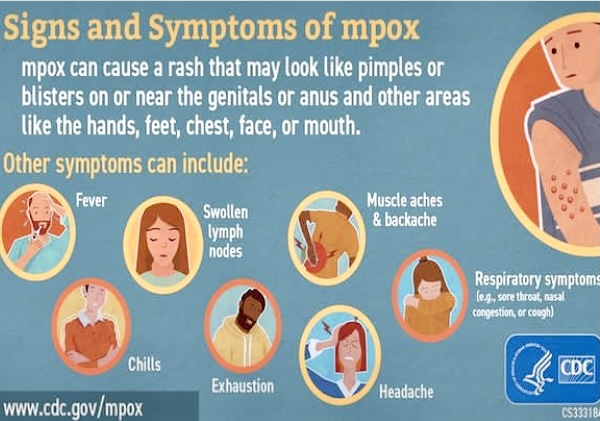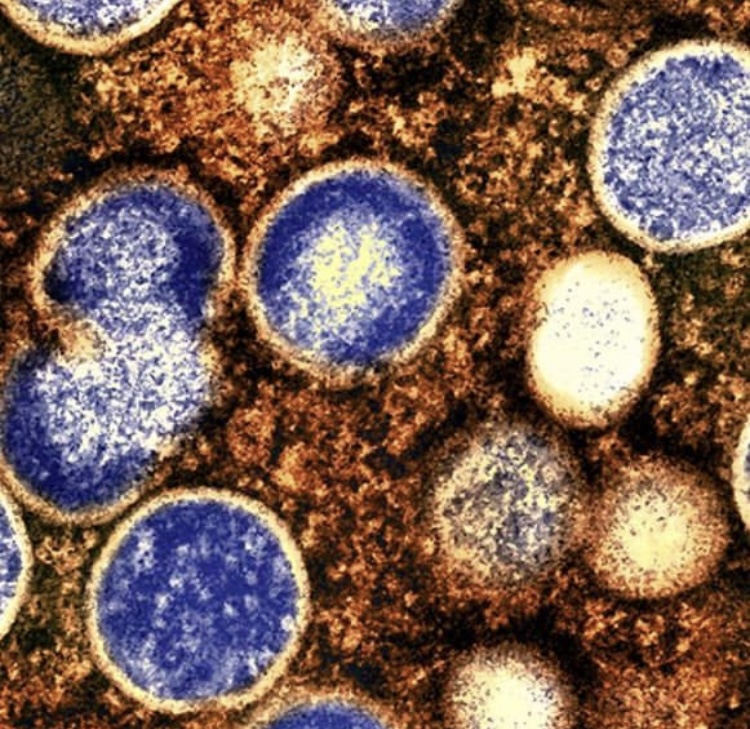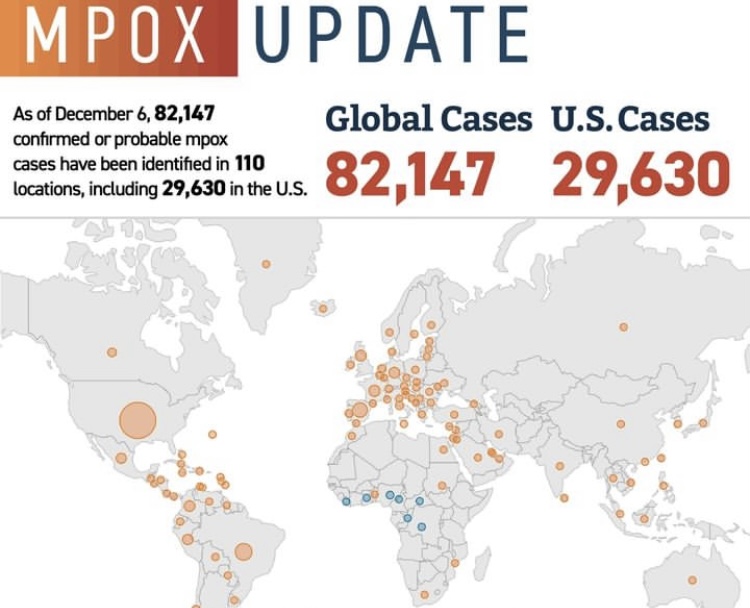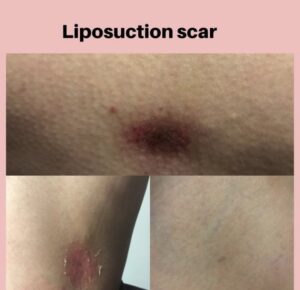Mpox is a highly contagious virus that can have serious consequences if left untreated. Symptoms of mpox include fever, body aches, and a rash that typically begins on the face and spreads to the rest of the body. It is important to recognise the signs and symptoms of mpox in order to prevent its spread and ensure early treatment. In this blog post, we will discuss the symptoms, causes, diagnosis, cure, prevention, widespread areas, vaccination, and conclusion of mpox so that you can stay informed and protect yourself and others.
Table of Contents
Symptoms
Mpox, or monkeypox, is a rare viral disease that is similar to smallpox, although much milder. It is found mainly in remote parts of Central and West Africa. It can cause a wide range of symptoms including fever, headache, muscle aches, backache, swollen lymph nodes, chills, and exhaustion.
A rash may develop, usually beginning on the face and then spreading to other parts of the body. The rash starts as red bumps and develops into small blister-like lesions which later scab over. It is not uncommon for the rash to spread to the palms and soles of the feet. In some cases, eye swelling or difficulty breathing may occur. Complications may include pneumonia, inflammation of the brain or heart, or death.

Causes
Mpox is caused by a virus known as the variola virus. This virus is part of the Orthopoxvirus family and is closely related to cowpox and monkeypox. The virus is spread through direct contact with an infected person, such as through coughing and sneezing, or contact with contaminated objects, such as clothing or bedding.
Inhalation of infected droplets can also spread the virus, but this method is much less common than direct contact. In rare cases, it can be spread through contact with an animal that has the virus. There is no known way to contract Mpox without coming into contact with the virus.
Symptoms usually appear two to three weeks after exposure. These symptoms include fever, headache, fatigue, muscle aches, and loss of appetite. Small red spots may then appear on the face and body, which will later become full-blown pustules (pus-filled bumps). Other symptoms may include joint pain and swollen lymph nodes in the armpits and groin area. Diagnosis of Mpox is usually made through visual examination of the skin lesions as well as laboratory testing of blood or tissue samples.

Diagnosis
When diagnosing mumps, doctors typically start by taking a full medical history and conducting a physical examination. The doctor will look for signs of swelling in the salivary glands, which is usually the telltale sign of mumps.
The doctor may also order a lab test to confirm the diagnosis. This can be done with either a blood test or a saliva sample. A blood test will measure levels of immunoglobulin M (IgM) antibodies, which indicate that you have been recently exposed to the mumps virus. A saliva sample can be tested for the virus itself.
In some cases, a doctor may also order imaging tests, such as an X-ray or an ultrasound, to look for enlarged salivary glands. This is generally only done if there are complications, such as deafness or encephalitis, that require further investigation.
Once the diagnosis of mumps has been confirmed, your doctor will discuss treatment options with you. Treatment is focused on managing symptoms and reducing the risk of complications.
Cure
Currently, there is no cure for Mpox. Treatment is aimed at managing the symptoms of Mpox and helping to prevent complications. This can include:
- Taking medication to reduce fever, muscle aches, and another discomfort
- Applying cool compresses to the affected area
- Taking antiviral medications, such as acyclovir or valacyclovir, to help reduce the severity of Mpox symptoms
- Taking pain relievers to reduce inflammation and discomfort
- Getting plenty of rest and fluids
- Applying topical ointments or creams to soothe and heal the affected area
- Taking oral antibiotics to prevent secondary bacterial infections from occurring
- Receiving a tetanus booster, if needed
It’s important to keep in mind that if you are infected with Mpox, you should avoid contact with others until the rash has crusted over and all the scabs have healed. This is usually 7-10 days after the onset of symptoms.
Preventions
Preventing mpox requires taking measures to avoid direct contact with an infected person, as well as staying away from areas where mpox is known to occur. Vaccination is the best way to protect yourself from the virus. The World Health Organization recommends that all children receive two doses of a mpox vaccine to ensure maximum protection.
Additionally, it’s important to practice good hygiene habits and wash your hands frequently, especially after coming into contact with someone who may have been exposed to the virus. Avoiding contact with items like bedding, toys, and utensils that have come into contact with an infected person can also help reduce the spread of mpox. Early diagnosis and treatment are key in managing symptoms and preventing further complications.
Finally, it’s important to keep up with regular doctor visits so that any signs of infection can be caught early and treated appropriately.
Wide Spread Areas
Mpox is a contagious virus that can spread through physical contact and respiratory droplets. It is most common in developing countries, especially in areas with poor sanitation. In certain parts of the world, Mpox is still a major cause of death among children under the age of five. According to the World Health Organization, Mpox kills nearly 300 million people annually. It has been reported to be endemic in more than 90 countries, with the highest incidence rates being reported in Africa and Southeast Asia. In India, it is estimated that almost half of all children are infected with Mpox.
In recent years, there have been efforts to control and prevent the spread of Mpox by improving sanitation and providing better access to immunizations. The introduction of a safe and effective vaccine has been key in helping to control the virus. Vaccination programs have been implemented in various countries, helping to reduce the number of cases. In the United States, Mpox is rarely seen due to widespread immunization campaigns.
Most cases of Mpox occur in unvaccinated travelers or immigrants who come from places where the virus is more prevalent. Symptoms usually appear around 10-21 days after infection and include fever, rash, tiredness, headache, swollen lymph nodes, and eye swelling. Severe complications from Mpox include inflammation of the brain (encephalitis) or lungs (pneumonia).
To diagnose Mpox, blood tests or cultures must be done to detect the virus. Treatment typically involves bed rest and fluids as well as pain relievers for fever and aches. Antibiotics may also be prescribed if there is evidence of bacterial infection. To prevent contracting Mpox, individuals should get vaccinated against the disease as soon as possible. In addition, practicing good hygiene such as regular hand washing and avoiding close contact with someone who has symptoms can help reduce your chances of getting infected.

Vaccination
Vaccination is an important method of preventing Mpox. Vaccines can help protect you against the virus, and it’s recommended that children get vaccinated for Mpox at an early age. The World Health Organization recommends that people receive the vaccine for Mpox at least once in their life. It’s also recommended that people who live in or travel to areas where the disease is common should receive a booster shot of the vaccine every 10 years.
The vaccine is most effective when it’s given before a person is exposed to the virus. It’s also important to note that even after receiving the vaccine, you may still be at risk of getting infected with Mpox. The best way to reduce your risk of infection is to practice good hygiene, such as washing your hands often and avoiding contact with people who have the virus.
It’s also important to note that the vaccine is not 100% effective in preventing infection. There are certain strains of the virus that the vaccine does not protect against. It’s important to talk to your doctor if you have any concerns about whether or not you should receive the vaccine.
The vaccine can also have side effects, such as fever and rash. However, these side effects are generally mild and go away quickly. If you experience any serious side effects after receiving the vaccine, it’s important to contact your doctor right away.
Overall, vaccination is an important tool in preventing Mpox. It’s important to talk to your doctor if you have any questions or concerns about getting vaccinated.
Conclusion
Mpox is a highly contagious disease that can cause serious health complications and even death in some cases. Fortunately, with the right treatment and prevention methods, this condition can be managed and its spread contained. It is essential to know the signs and symptoms of mumps so that appropriate diagnosis and management can be initiated as soon as possible.
Vaccination is the most effective way to prevent the spread of mumps and can be obtained through local healthcare providers. It is important to practice good hygiene habits and social distancing to reduce the risk of contracting and transmitting mumps. If you or someone you know may have been exposed to mumps, it is important to seek medical attention immediately.





I like this site very much, Its a really nice berth to read and find information.Money from blog